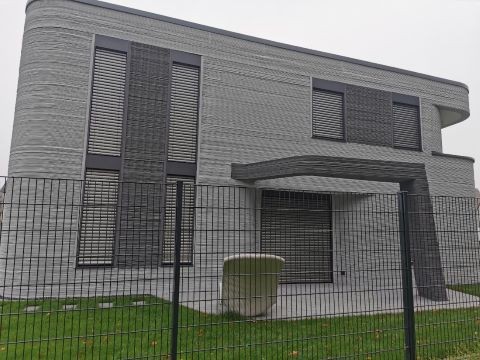Innobau 3D
For the two 3D printing technologies extrusion and particle bed printing, the research project aims at the development of new printing materials with regionally available raw materials including coarse, light and recycled aggregates as well as the optimization of the tensile load capacity for load-bearing components with multiple functionalities.
In this context, the use of water-absorbent aggregates (recycled and lightweight aggregates) poses a particular challenge. In the course of the investigations of the pressure materials, the mechanical and insulating properties are also optimized when using regional source materials. The technical limits of the new printing materials in terms of material strength and thermal conductivity are to be identified and worked out, while at the same time ensuring adequate conveyability/printability and dimensional stability. In a separate work package, particular attention will be paid to optimizing the tensile load-bearing capacity of the newly developed printing materials, since it is only when the material and the components printed from it have sufficient tensile load-bearing capacity that they can be used for load-bearing structures in the construction industry. The newly developed printing materials are then used to develop new component and load-bearing structures for 3D-printed load-bearing components for both printing processes using, among other things, shape-finding algorithms and force-flow-oriented molds. This also includes the modeling of the load-bearing behavior, taking into account the boundary conditions from the printing process, and the development of suitable test procedures for quality assurance (at component level). Furthermore, design approaches are being derived to verify the load-bearing capacity to be applied by calculation. At the end of the project, two demonstrators will be developed and produced together with the two partners.
| Research field: | Additive Manufacturing in Civil Engineering, Concrete Technology |
| Responsible: | Prof. Dr.-Ing. Stengel |
| Prof. Dr. Jörg Jungwirth | |
| Prof. Dr.-Ing. Andrea Kustermann | |
| Dr.rer.nat Kai Tandon | |
| M. Sc. Nico Obermeier | |
| Funding: | Bavarian State Ministry for Economic Affairs, Regional Development and Energy |
| Research Center Jülich GmbH | |
| Duration: | 01.12.2021 - 30.11.2024 |
| Project partner: | PERI, Weißenhorn |
| FIT AG, Lupburg |
